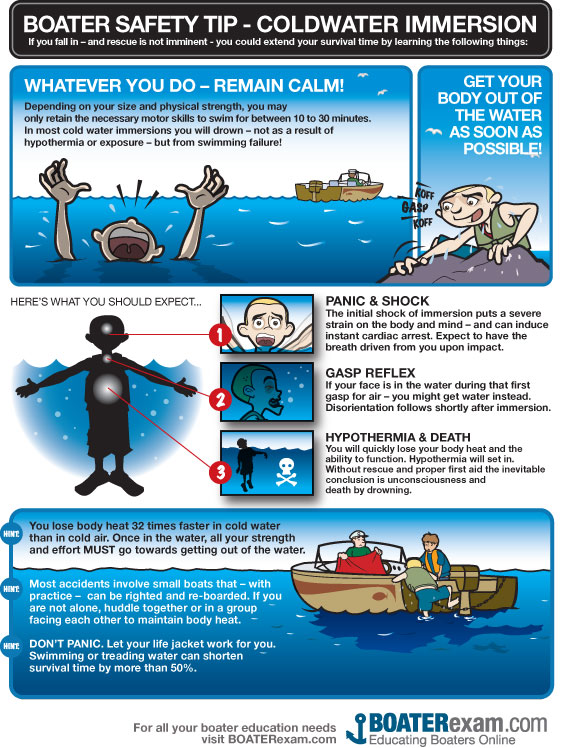
People die in Lake Tahoe’s waters every year.
Cold water shock is one of the most common causes of death in the lake. Becoming quickly immersed in cold water can cause an involuntary gasp, difficulty breathing, rapid breathing or muscle failure, all of which can lead to drowning.
Authorities urge lake users to wear live jackets, even if they don’t plan on getting in the water. Life jackets keep the heads of the accidentally (or intentionally) immersed above water, keeping their lungs from filling with water even if the victim is going through cold water shock.
“If you get into trouble in the water, a life jacket will save your life. We’ve seen it over and over. These fatal accidents can be avoided,” said Chief Game Warden Tyler Turnipseed of the Nevada Department of Wildlife (NDOW).

Cold water shock differs from hypothermia in that it happens essentially immediately upon immersion, while hypothermia takes much longer to set in. Depending on body mass and water temperature, hypothermia take longer or shorter to occur, but even in freezing water, average adults take approximately half an hour to become hypothermic. While hypothermia is a life threatening state, it takes many minutes to claim the lives of victims, meaning that rescuers should be careful and avoid panicking. Cold water shock is immediately life threatening.
Accidents on Lake Tahoe also claim lives. Famously, an attempt at setting the fastest watercraft world record resulted in the death the pilot, Lee Taylor, after his boat flipped and incapacitated him. However, more ordinary accidents claim the lives of ordinary people taking to the water. Accidents become deadly when the victim is immersed in water while incapacitated, and their lungs fill with water. Life jackets can save these lives as well, as they keep the heads of incapacitated victims above water.
Finally, urban legend has it that Lake Tahoe’s waters are the final resting place for people who met their ends at the hands of others, including those who crossed the local Mafia. “That may or may not be true, but we can’t be sure because we can’t go down [far enough to find those bodies],” said Van Arnum, a member of the El Dorado County Sheriff’s Department and former coroner. Other experts are more skeptical.
Most dead people in most bodies of water float. Microorganisms digesting a body’s flesh produce carbon dioxide gas, which bloat’s the body and fills the chest cavity with gas. After several days, when the net density of the body becomes less than that of the water that surrounds it, the body becomes buoyant and floats to the surface.
However, microorganisms, like people, don’t do too well in the cold. Lake Tahoe’s cold water (which, far below the surface, remains a chilly 38-40 degrees Fahrenheit year round) significantly slows the metabolisms of these microorganisms, much like a refrigerator would. With a slower metabolism comes less gas production, and with less gas production comes less buoyancy. Consequently, bodies immersed in Lake Tahoe’s water tend to sink rather than float.
While the rate at which microorganisms decompose bodies in Lake Tahoe may be significantly slowed, bodies can still be eaten by (macro-) organisms such as fish. However, this process tends to be much slower than the decay caused by microorganisms. Essentially intact bodies have been recovered from Lake Tahoe’s depths years after death.

What happens to bodies in Tahoe? Some are recovered days, months or even years after death (some with the help of remotely operated underwater robots). However, many bodies remain floating in Tahoe’s cold water.
“Usually a person who goes into the lake, they don’t come back up,” said Mike McFarlane of McFarlane Mortuary.
Keep yourself from becoming one of these victims. Wear a life jacket, access the water with a partner, and know what to do if the worst happens.
